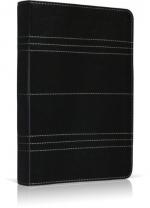|
This section contains 310 words (approx. 2 pages at 300 words per page) |
Carbon, in the forms of charcoal, graphite, and diamond, was one of the earliest elements known to man. Although discovered later than charcoal, graphite was prized early on for its ability to produce a blue-gray streak when rubbed against a rough surface. The term graphite is derived from the Greek word, grapho, meaning "I write."
Substances that exist in two or more forms that are significantly different in physical or chemical properties are called allotropes. Graphite is one of the four allotropic forms of carbon; the other three are amorphous carbon, diamond, and fullerene. Unlike many other elements, carbon does not readily convert to different allotropic forms in the absence of extreme conditions, e.g., high pressure, high temperature, and/or long spans of time.
Structurally, graphite consists of sheets of carbon atoms linked hexagonally like chicken wire. Each layer is one, gigantic two-dimensional molecule. The bonds holding the layers together are similar to those in metals, with the result that graphite exhibits metallic conduction in the direction of the planes. Because the forces between the layers readily allow the layers to slide over each other, graphite is a good lubricant.
The natural supply of graphite is not sufficient to meet demand for it as a lubricant, so it is produced synthetically on a large scale. Most graphite is obtained from petroleum coke, i.e., the black tar that remains after all of the useful fuels and lubricants have been removed from crude oil. The coke is heated in an oven that has no access to outside air to burn off most of the impurities, leaving a fairly pure form of graphite.
In addition to its use as a lubricant, graphite is also used in the manufacture of "lead" pencils, pigments, electrodes for carbon-arc lamps and electrochemical cells, refractory crucibles, matches and explosives, and moderators for nuclear reactors.
|
This section contains 310 words (approx. 2 pages at 300 words per page) |


